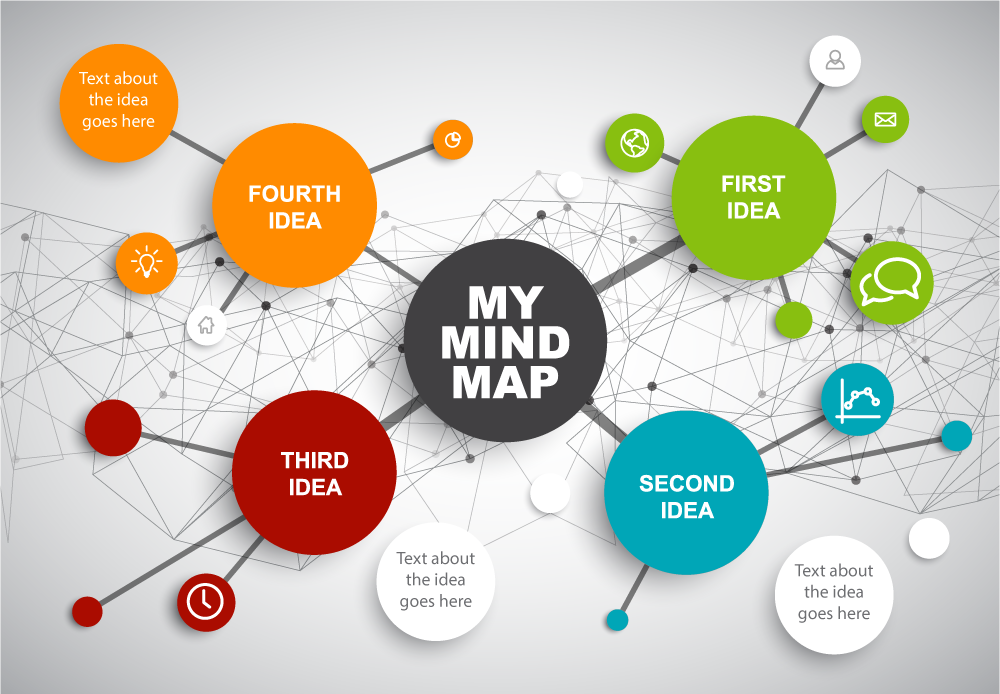Mind Mapping: An Organizing Tool for Study Materials
Students frequently have trouble organizing their study materials in the era of information overload. It’s easy to feel overburdened with lectures, textbooks, notes, and digital resources accumulating. That's where mind mapping comes in—an easy but effective method that improves your ability to organize, see, and remember information.
This article will define mind mapping, explain how it works, and show you how to use it to turn your study time into effective learning experiences.
What is a mind map?
A mind map is a graphical representation that links concepts and data around a central theme. Consider it a tree: the trunk represents the main idea, while the limbs and twigs represent the subtopics.
Since this approach mirrors the way our brains operate—linking concepts through patterns and connections—it facilitates the comprehension and retention of intricate information.
What Are the Benefits of Using Mind Maps for Studying?
Improved Organization
Mind maps organize your notes logically and clearly, allowing you to see how ideas connect.
Improved Memory
The visual arrangement helps with memory. A page of simple text is less likely to be remembered than a colorful, connected diagram.
Enhanced Creativity and Concentration
Making a mind map helps you stay actively involved with your content, fostering deeper comprehension and creative thought.
Time-Saving
Mind map reviews take only a few minutes, speeding up and improving the revision process.
How to Make a Mind Map
Making a mind map is easy. Here's a step-by-step instruction manual:
1. Select a Main Subject
Begin with the primary topic you wish to learn about. Write it in the middle of the page or display. For instance, the French Revolution or photosynthesis.
2. Include Main Branches
For each major concept or chapter pertaining to the subject, draw lines radiating out from the center.
Sample branches:
For photosynthesis: chloroplast, light reaction, dark reaction.
For the French Revolution: Key Players, Causes, Major Events, and Effects
3. Add SubBranches
From each main branch, draw smaller lines for important facts, examples, definitions, and details.
4. Utilize Colors, Pictures, and Symbols
Use icons, drawings, or symbols to make the map visually unforgettable. Add color to distinguish sections.
5. Be Brief
Use keywords; avoid lengthy sentences. Mind maps prioritize clarity over intricacy.
Mind Map Creation Tools
You may create mind maps manually or using digital tools such as:
XMind: Advanced Features, Perfect for Students
MindMeister is excellent for cloud access and collaboration.
Coggle is straightforward and user-friendly.
Canva or Notion – Customizable templates
How to Study Using Mind Maps.
While Taking Notes
Try sketching a mind map as you listen instead of taking line-by-line notes in class or during a lecture. It will allow you to view the big picture at a glance.
During Revision
Make a mind map using the summaries of your chapters. Utilize it to accelerate your revision prior to exams. The visual layout aids in rapid point recall.
For Planning Essays
For writing structured essays or answers, mind mapping aids in organizing concepts, examples, and arguments.
Study in Groups
Create collaborative mind maps with your classmates to combine and compare study materials.
Topics That Are Perfect for Mind Mapping: Examples
Science: Biological processes, chemical reactions, physical formulas
History: Causes & Effects, Events, Timelines
Languages: Word, grammatical rules, verb tenses
Mathematics: Problem-solving techniques, formula maps
Competitive Exams: Breakdown of syllabus, current events, static GK
Advice for Successful Mind Mapping
One subject per map, please.
Utilize color coding for categories.
Regularly review and update your maps.
For easy reference, print them out and pin them up in your workspace.
Concluding Remarks
More than simply a study method, mind mapping helps you think more clearly, learn more effectively, and remember more. Using mind maps can give you a distinct advantage, whether you're studying for school exams, the JEE, NEET, or the UPSC.
Therefore, if you have too many notes or are sick of dull outlines, give mind mapping a go. It is straightforward, interactive, and very successful.
For more intelligent learning techniques, visit www. smartstudys. com, your partner for easier and worry-free studying!


Post a Comment
0Comments